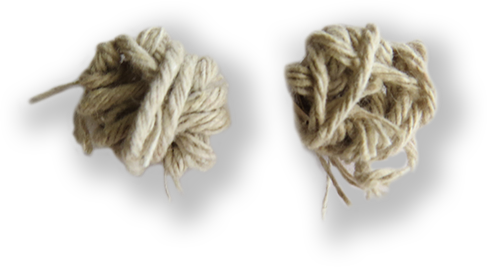7.2906° N, 80.6337° E
Dumbaragama Valley,
Kandy
Altitude
465 m above sea level
Gender
53.0 % Men
47.0% Females
Population
15,045
These mats are woven by men and women as a family-based livelihood practice. The families that practice this craft often enjoy a higher social status in comparison to the ones weaving pang peduru. In ancient times, weaving of such mats was done with hemp on low pit looms within the living space of the family. It is now done with cotton, woven on free standing looms that are grouped in airy workshops next to the family homes.
Premachandra, a master craftsperson, learnt the practice of weaving these mats over forty years ago. He transfers his design directly from thought to thread without ever sketching them out on paper in any way.
A century ago, the hemp leaves would be crushed and spun into thread on a hand-turned wheel before being woven on the loom.
Step 1
Today, the raw cotton thread arrives in small balls.


Step 2
This is spun onto a spindle.

Step 3
Once the thread is spooled around the spindles, these are then used on the looms in almost the same way that the hemp was anciently done.
Between the fifteenth and nineteenth centuries, a song known as the kinnara gittaya was sung by a community called ‘kinnara’ that supplied ornamental mats to the royal palace as part of their obligatory service to the crown.
24
hours
approximately for wall hanging or table mat

